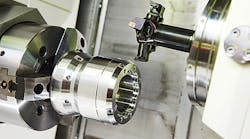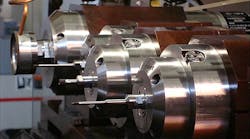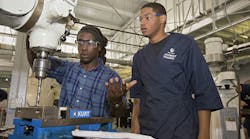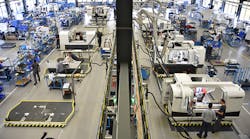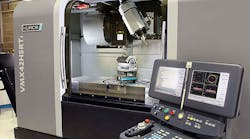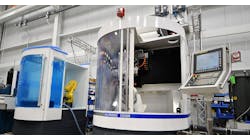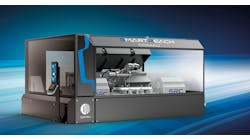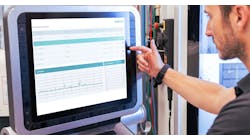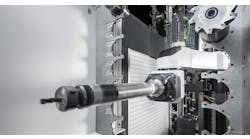Multi-axis machining offers many benefits to manufacturers that can harness and implement the capabilities of this technology correctly. Ultimately, it is an effective step toward factory automation, offering the opportunity to condense multiple machine operations into one, saving takt time, total production time, production cost, and improving tolerances.
The efficiencies and benefits offered by multi-axis machining are largely due to reduced set-up times. This decreases burden rate on machine-tool operators who do not have to re-fixture as many parts. Decreasing the number of set-ups also allows manufacturers the opportunity to machine complex shapes in a single step, reducing the potential for operator error and ensuring the accuracy of the finished product.
While traditional three-axis machining may require three or four different machines to produce a finished part, and an operator to conduct the process from one machine to the next, this entire process can be replaced by a single five-axis machine, significantly reducing takt time.
Single set-up savings — Seven-axis machines go even further. In these cases, manufacturers can combine milling and turning operations on a single machine. Again, they would benefit from a single set-up, ultimately producing an individual part that has tighter tolerances, as the need to re-fixture has been removed. The opportunities with seven or more axes get really exciting, as they allow the combination of operations, such as grinding, milling, drilling, and turning to be incorporated into that single set-up.
Despite high initial capital costs, the potential for substantial production efficiencies and improved finished-product quality offer significant ROI, through reduced process cost and scrap rates. Currently, machine shops’ adoption of multi-axis machining has been slower than might have been anticipated. Small and medium-sized manufacturers tend to have settled with three-axis machines, until they can see the ROI that might be achieved, whereas larger OEMs are moving into five-, seven-, and eleven-axis machines, potentially with multiple spindles.
Small and medium-sized manufacturers also tend to try to obtain the maximum value from legacy equipment before investing in new systems, which may be contributing to the slow adoption of more efficient, modern machines. This is closely related to the more general behavioral habit involving reluctance to change: If your operators are used to a certain style, and they know how to program and design for it, any change brings disruption.
Of course, adopting multi-axis machining depends very much on the production needs and orientation of individual manufacturers, and varies between business size and sector. Manufacturers that make the investment recognize the benefits that multi-axis machining offers, and certainly have an increased interest in acquiring and using these systems — but due to perceived challenges for set-up, the speed of implementation is not high.
Adoption of multi-axis machining is dependent on the value of the machine to the manufacturer. This means assessing ROI, and how quickly it will be achieved. ROI must be assessed based on individual manufacturers’ revenue streams, and market demand for more robust manufacturing processes. It’s important not to be oversold.
Overcoming the reticence — Implementing a new machine implies much more than resolving cost and skill issues. It can necessitate a change in the manufacturing philosophy of a plant. It carries implications beyond the machine itself, such as reducing the number of operations, and integrating the new technology with the entire value stream to optimize ROI.
The impact on personnel in terms of training and development also can be significant. Once a multi-axis machine is implemented, the workforce requires the necessary skills to operate it. It’s also critical for the requisite CAD and CAM programs to be in place to manage complex multi-axis operations.
One of the pressing issues OPTIS sees with the implementation of multi-axis machining is the fact that machine tool builders often sell manufacturers more complex machines than are really necessary. A lot of companies may have bought five-axis machines, for example, but operate them as they would a three-axis machine, wasting capacity and reducing the ROI on the machine.
Despite perceived complexities in its set-up, the benefits of a well-implemented multi-axis machining far outweigh any pitfalls along the route to implementation. For many manufacturers looking to harness the efficiency gains of automation, multi-axis machining can provide a sensible, efficient step in that journey: a proven technology that can reduce human error and improve tolerances through increased automation, simplifying operations and improving product quality.
Jon Iverson is the chief executive officer of OPTIS, a joint venture of TechSolve and Castrol that develops machine monitoring, process efficiency, and supply-chain optimization programs for machining operations. Learn more at www.optis-solutions.com
